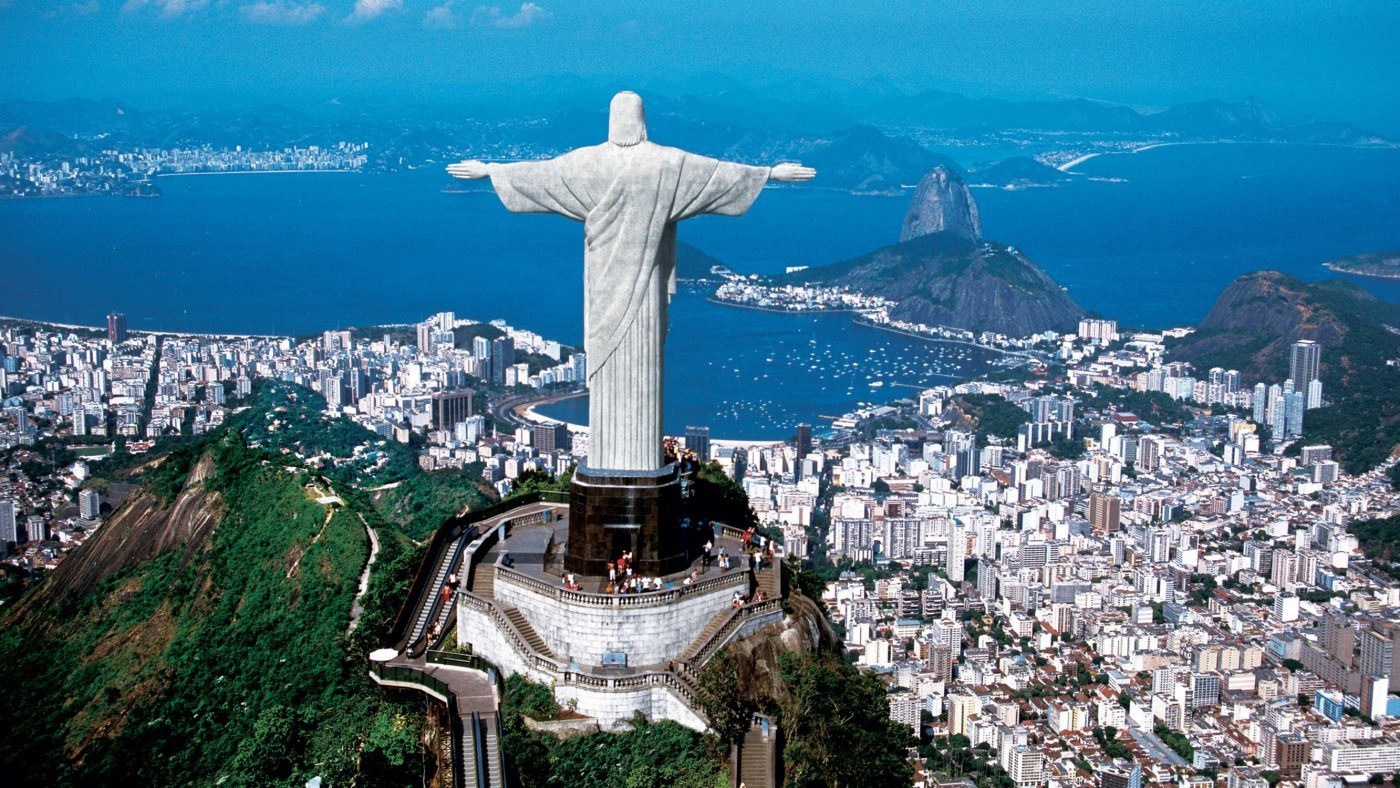Now is the time to visit Brazil. Infamous until recently as one of the most over-priced destinations in the world thanks to protectionism and inefficiency, political instability has sent the real crashing down. Today, one British pound will buy you around 5 reals (up from 3.5 in 2013), and if you avoid the month of the Olympics, this is your chance to take advantage of the currency and plan an unforgettable trip to the heart of Latin America.
Rio de Janeiro boasts over 3000 hotels, from backpacker hostels to the historic Copacabana Palace. Don’t stay in any of them. It is 2016 and Brazil is the internet capital of the world, so get on Airbnb and book a lavish apartment on the beachfront of romantic Ipanema or classy Leme. You’ll have more freedom and get a better sense of the buzzing city than from an isolated hotel room – though the Copacabana Palace is worth a visit for a drink on the poolside terrace.
Once you’ve recovered from the grid-locked drive from Galeão airport, you’ll want to hit Rio’s iconic beaches for some serious relaxation. Copacabana may be internationally-acclaimed, but the neighbouring Ipanema and Leblon are actually much nicer, with cleaner waters and a calmer vibe. Enjoy the luxury of having cocktails and açaí smoothies brought to you by the dozens of hawkers selling their wares, but watch out for pick-pockets, sunburn, and waves that will seek to drag you into the warm Atlantic.
If you’re lucky enough to be in Rio on a Sunday, the best market in town is the Hippie Fair in Ipanema, which runs all day. This is the perfect place to buy not only handmade souvenirs and jewellery, but also artwork, from pocket prints to giant wall-sized canvasses. For something quintessentially carioca, buy a painting of Rio’s brightly-coloured hilltop houses, or a representation of the world-famous Christ the Redeemer statue.
Speaking of Cristo Redentor, no visit to Rio is complete without a trip to Corcovado, the hill which houses this remarkable statue. Construction took nine years and cost US$3.2 million in today’s money. Take a bus or a taxi to the train station at Cosme Velho and ride up through jungle to the summit. Don’t listen if you are told it is too cloudy to see much. While all the postcards may show the statue in brilliant sunshine, the effect as it looms into view through the clouds is worth the missed opportunity for admiring views of the city.
Hiking in the Tijuca rainforest is another must-do Rio experience. It’s hard to believe on the bustling streets of Lapa or the crowded beaches of Copacabana, but just an hour away is the world’s largest urban forest. The history of Tijuca is a tale of enterprise, politics, and reclamation. Once cleared for coffee farming, the land was rebought during the 19th century due to fears about the sustainability of Rio’s water supply, and today it is a National Park, with pockets of private land dotted throughout the wilderness. If you can’t make it to the Amazon, this is your chance to explore the jungle, and you might even see a capuchin monkey.
Don’t waste time with a jeep trip, this forest needs to be experienced on the ground. The park is hard to access by public transport and there are very few signs, so taking a tour is definitely recommended. Try Tito at Jungle Me if you want an exceptional guide who can also give you a full lesson on the history and ecology of the forest, the city, and Brazil itself. His Express Hike to Pedra Bonita is a great half-day excursion, with some steep sections, but accessible to most fitness levels. Hard-core hikers can try the Tijuca Adventure Circuit, which takes you off the beaten track with a climb of 650m.

Photo by Jungle Me
All of the hills offer spectacular views. As you reach the top, prepare to be greeted by sweeping vistas over the whole city, which come and go as the clouds move in. Out of all the ways to see Rio de Janeiro from above, from the Corcovado train to the Sugarloaf cable car, this is the most spectacular.
For dinner, don’t get stuck in the beach districts of Copacabana and Ipanema. Lovely though they are during the day, you won’t find the best restaurants by wandering the traffic-jammed boulevards. Instead, why not head to the windy bohemian streets of Santa Teresa, high up in mountains? Take the metro to Catete, and a death-defying taxi through the steep hillside alleys won’t cost more than 20 reals. For a truly breath-taking dining experience, head to Aprazivel, a luxury tree-house restaurant built on the edge of a cliff, surrounded by verdant jungle. This restaurant can only be found by those who know where it is, so take a map for the taxi-driver. Try the grilled fish of the day, and don’t forget to order one of their signature caipirinhas.
Eating at one of Rio’s many churrascarias is a must for those wanting a traditional Brazilian experience. These range in price and ambiance, but if you want the best (and with the current exchange rate, you can afford it), head to Marius Degustare in Leme. For 210 reals per person, sit back and relax as waiters circulate with plates of steak and seafood for you to try. Try not to be seduced by the buffet of salads and sides – this restaurant serves only the best, including lobster and Kobe beef, and you’ll need stamina to enjoy it to the full. The décor is an Aladdin’s cave of odd antiques, including ships instruments and a life-sized knight slaying a dragon, and the full experience is one of opulence and wonder. It may not be cheap, but it is utterly worth it.

Marius Degustare
After dinner, hit the streets of Lapa for some samba. While this neighbourhood borders the favelas and may not be the best area for late-night wandering, it’s just 50 reals in a taxi from Ipanema to the pulsing street of Rua do Lavradio. At Rio Scenarium, expect three floors of music and more quirky décor (oil paintings, clocks, and umbrellas feature heavily). There’s live music and dancing every night – you’ll start off watching the experienced locals spinning on the dancefloor, before finding it impossible not to join in. If you’re missing the carnival, this is the chance to experience the spirit of samba.
There is always more to do in Rio – the botanical gardens in Lagoa, the Museu de Arte in Centro, and of course the Maracanã football stadium once it is reopened after Olympics renovation. But now you’ve made it this far, you are tantalising close to some of the most incredible scenery on the planet. Rio de Janeiro is the gateway to Brazil’s lesser-known wonders. It’s time to explore.
This is a three-part travel guide to Brazil. The others are The wonders of the Pantanal and Falling for Iguassu.


